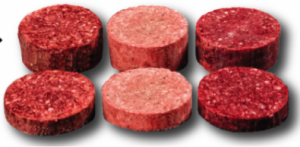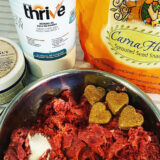Tis’ the season for fleas and ticks!
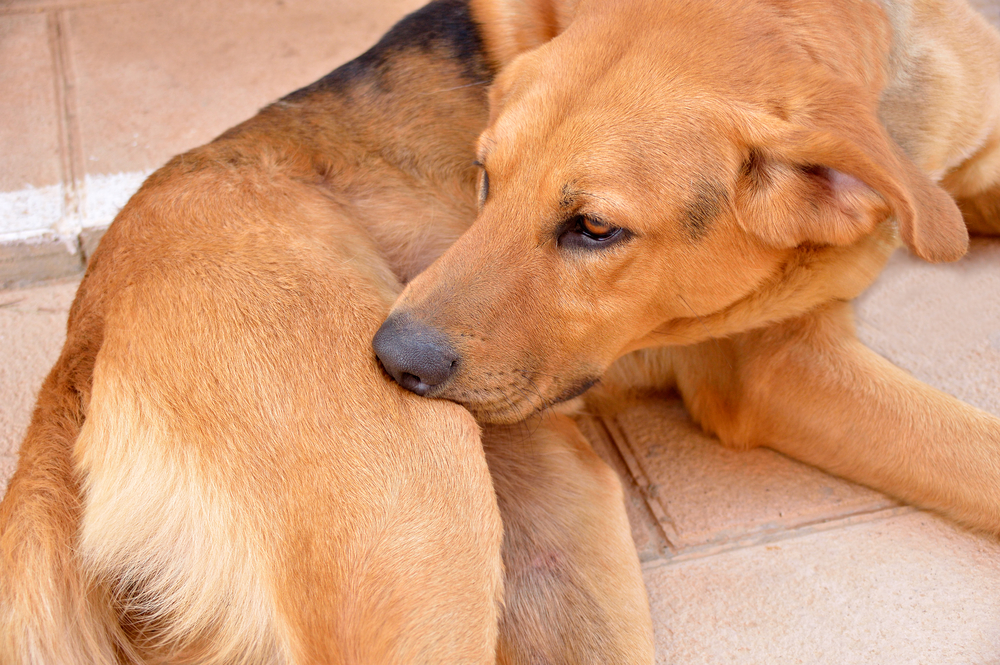
Your pets are most at risk of ticks during the warmer months. However, they are susceptible any time the temperature goes above zero degrees Celsius. As a pet owner we should know about some of the risks associated with common treatments. There are many different kinds of flea and tick treatments and preventions. There are chemical oral pesticides, chemical topical pesticides, chemical flea collars, natural scent-based flea prevention, natural pesticides, and diatomaceous earth.
As dog owners, we also have to consider the effects that chemical tick treatments have on our dog’s digestive tract, internal organs and overall health, both short and long term. Dr. Karen Becker states “the use of spot-on products may cause skin irritation, paralysis, seizures and even death if used improperly”, highlighting some of the issues associated with chemical pesticides. (https://healthypets.mercola.com/sites/healthypets/archive/2016/07/02/flea-and-tick-prevention.aspx)
Natural Tick Prevention
1. Dietary Tick Preventatives
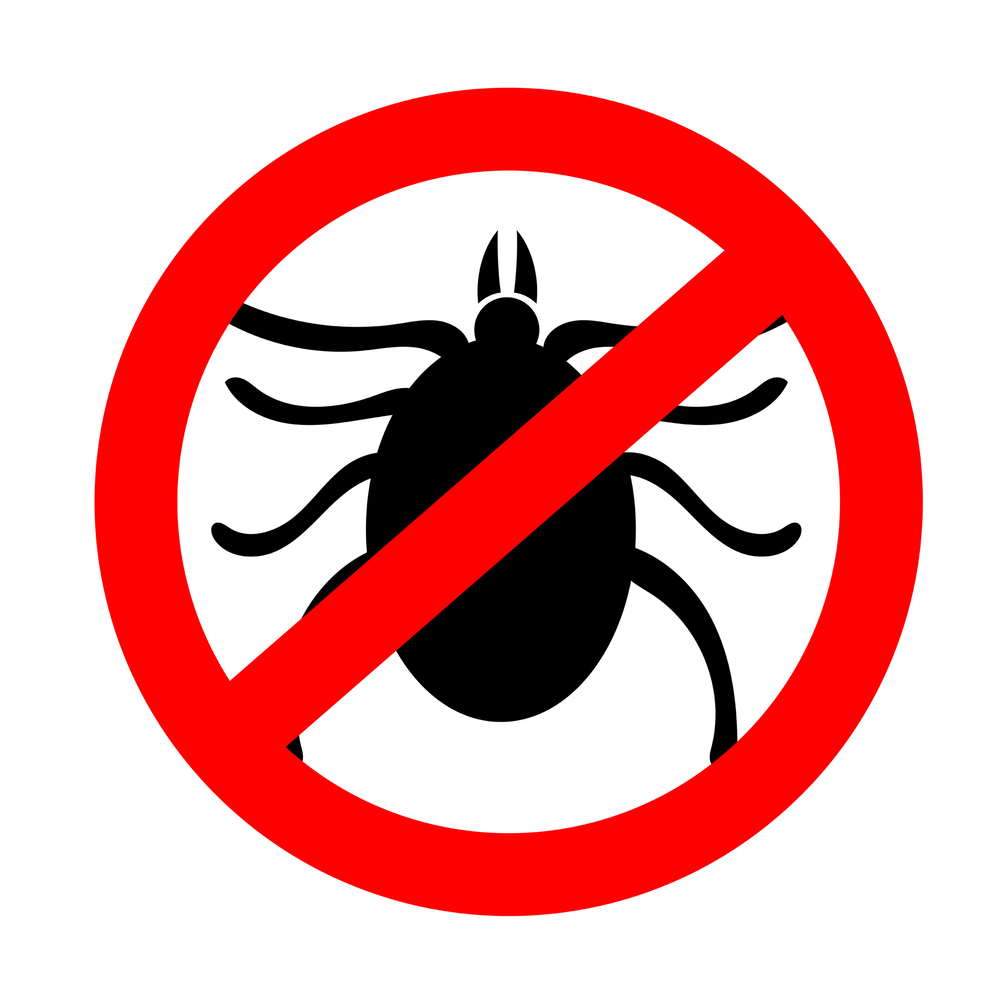
Garlic – Garlic given in dog food can make the dog less appealing to ticks. The smell is excreted through the skin and repels both ticks and fleas. However, garlic contains sulfoxides and disulphides, which can damage red blood cells and cause anemia in dogs when fed in very large amounts, so only appropriate amounts should be given.
Earth M.D. Outdoor Shield is a product that contains the ingredients quassia bark and neem leaf, which contain compounds that are toxic to insects, but not mammals. When the pet consumes it, these compounds go into their bloodstream and spread throughout their body. When a bug bites them, these compounds make it so the insects cannot eat or reproduce, and then they die. This formula also contains garlic which makes the pets deterrent to insects.
2. Topical/External Tick Preventatives
Herbal flea and tick powder
Diatomaceous earth – a non-toxic powder consisting of ground fossils, marine life and freshwater organisms. While non-toxic to humans and animals, this powder is lethal to ticks and fleas. Big Country Raw, Baie Run and Totally Raw all make pet-friendly diatomaceous earth.
Diatomaceous earth is a great product to have handy around the house and fights against all insects like ants and flies. Note: Do not inhale and avoid putting in eyes, nose and mouth.
To use it on your pet, simply sprinkle it on them and rub into their fur until it gets to their skin. This can be quite messy since it is the consistency of flour, so make sure you do this outside. However, it works great on pet beds and furniture to kill fleas or bed bugs. Diatomaceous earth is safe externally, as well as internally (they can eat it), as long as it is the FOOD GRADE version! The diatomaceous earth sold at Canadian Tire and the like are meant for gardens and pools. It is NOT food grade! Do not feed this type to your pets! The diatomaceous earth Tail Blazers sells is food grade and safe for ingestion.
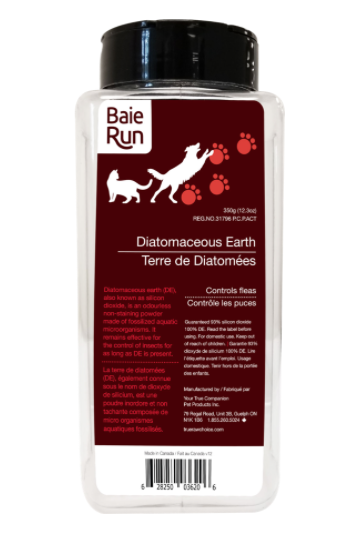
Pros:
- Can kill insects mechanically from contact
- Safe to ingest
- Easy to apply
- Can be applied to furniture and floors for infestations.
Tail Blazers also sells some topical bug sprays such as Citrobug and Naturpet Outdoor Dog Spray.
NaturPet Outdoor Spray is a blend of natural herbs that eliminates odors and aids in bug prevention. It also works great for after washing to deodorize and provide a shinier looking coat. Remove that wet dog smell with ease using this outdoor spray and help keep your pet safe from nasty bugs this summer. Note regarding cats: Cats are sensitive to many ingredients used in repellants, so please read labels carefully to know if a product is safe to use on your cat.
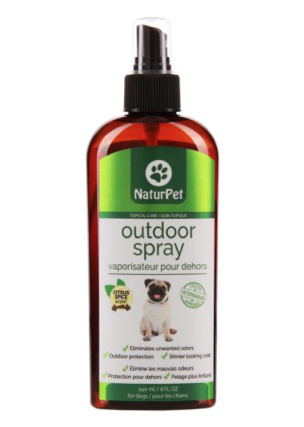
Pros:
- Safe
- Deters bites from insects
- Relatively easy to use

Human Chemical Bug Sprays
Did you know human bug sprays are not good for our pets? Most human bug repellents contain a chemical called Deet (known to chemists as N,N-Diethyl-meta-toluamide) that when applied to skin or clothing, repels a number of biting insects, including mosquitoes, ticks, and fleas. DEET can be toxic to pets.
If your dog plays in wooded areas, once in a while they probably pick up a tick or two. Yes, even if you use prevention. No matter what you use for prevention. Most tick-borne diseases aren’t transmitted immediately. So, if you get ticks off your dog within 24 to 36 hours of a tick bite, they are unlikely to get infected. It Is essential to check your dog for ticks and remove them quickly.
Dos and Don’ts of Tick Removal
DO remove ticks within 24 to 36 hours of a bite.
If your dog’s out every day in areas with ticks, then you need to check them every day. Otherwise, check him when they been in the woods, long grass or any tick-infested area. Some dogs or cats may scratch or bite at themselves constantly in the same area, this could be a sign of a tick or another irritation.

DO check them over thoroughly.
Ticks especially like to hang out in places like;
· The groin
· Between the toes
· In or around their ears
· Around the anal area
· The tail and eyelids
TIP: If you have a long-haired or double-coated dog, use a dog hair dryer to blow his coat around. The hairs will part so you can see his skin and spot any ticks lurking there. You can also use a human hair dryer on a very cool setting so you don’t burn your pet.
If You Find A Tick on Your Dog
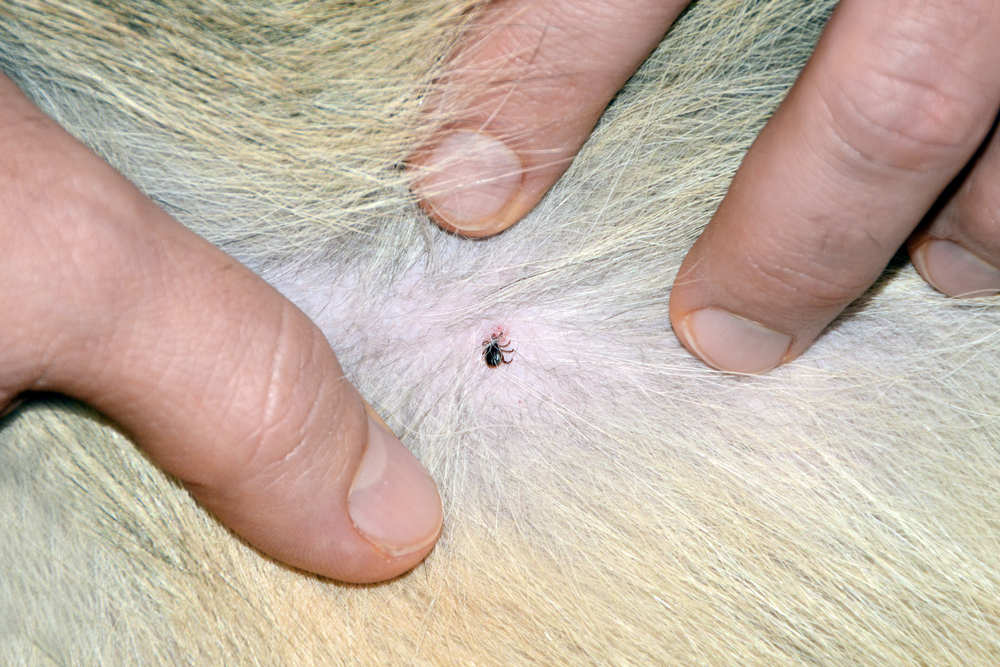
DO use a tick removal gadget.
There are several on the market. I like the Tick Key.
· Place the large opening of the Tick Key over the tick as close to the skin as you can
· Slide the Tick Key until the tick is in the narrow slot at the end
· Keep sliding the tick key in the same direction, along the skin
· The tick will come out, including the head.
· Clean the bite area and your hands with rubbing alcohol, iodine or soap and water
· You can kill the tick by putting it in alcohol, or flush it down the toilet
· If you’re concerned your dog may have contracted a disease, save the tick for testing.
DON’T remove ticks with your fingers. Disinfect your hands afterward with soap and water. You don’t want tick saliva or blood on your fingers. And don’t forget to clean the bite area on your pet.
DON’T squish or crush a tick. This can force infected body fluids through the tick’s mouth. It increases the risk of infection for you and your pet.
DON’T worry if the mouthpart of the tick stays in your dog’s skin. You can take them to the vet to have it removed or have the vet remove the tick completely if you are not comfortable with it.
DON’T put things like nail polish, Vaseline or repellents on the tick to try to suffocate or kill it, this can increase chances of infection in your pet.
DON’T burn the tick with a lighted cigarette or hot match. These can also cause infections or hurt your pet.
DON’T throw the tick in your trashcan or sink. They can easily crawl back out. Ticks can be hard to kill!


